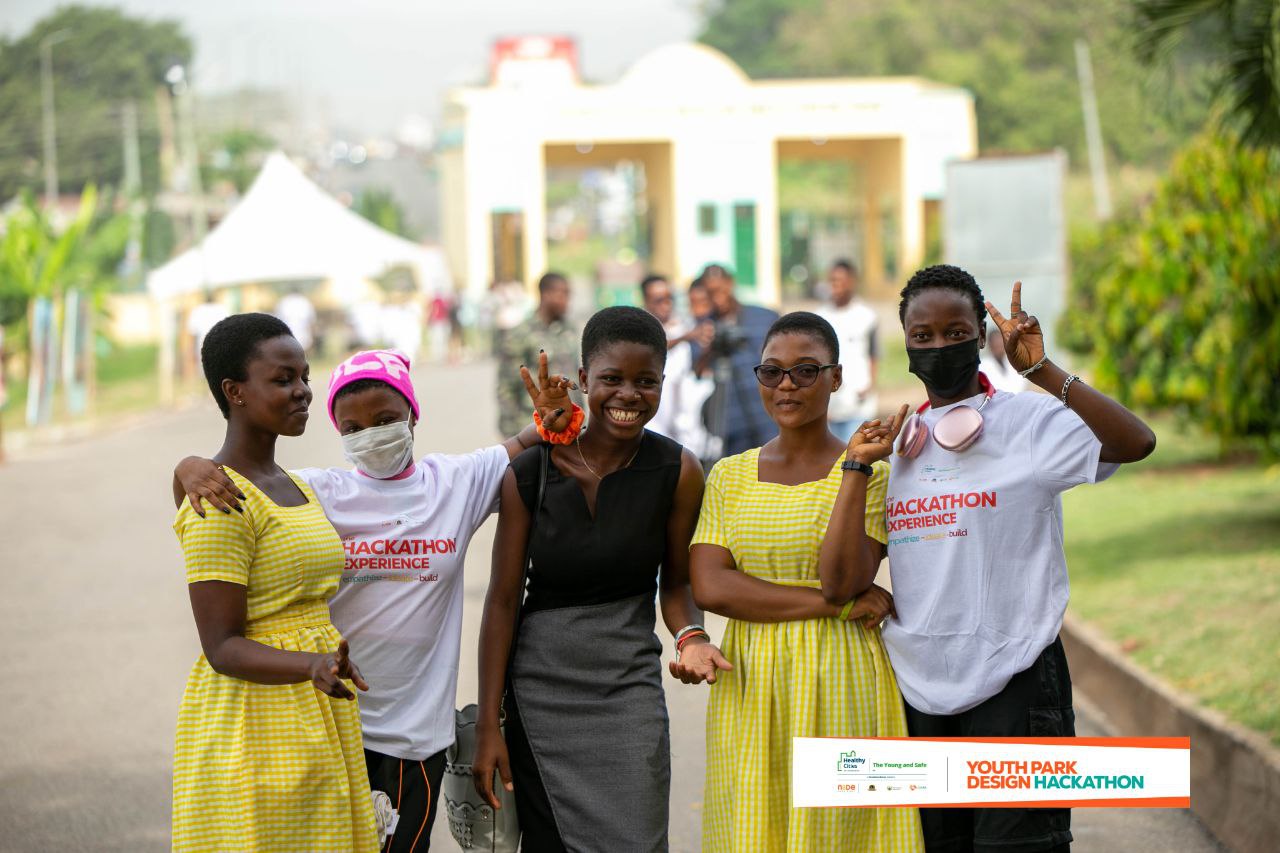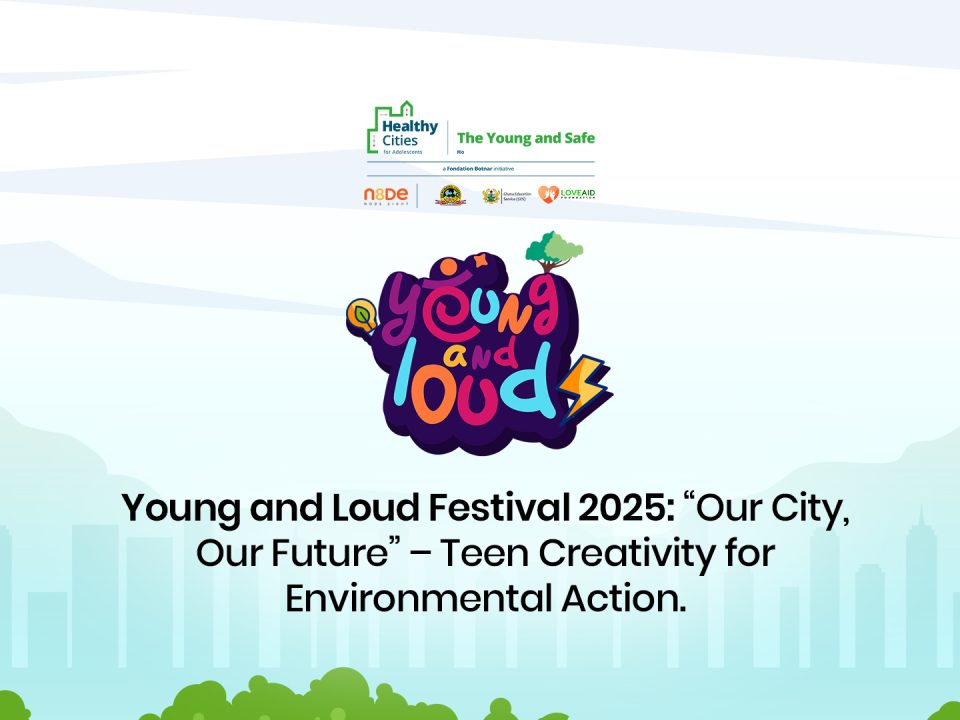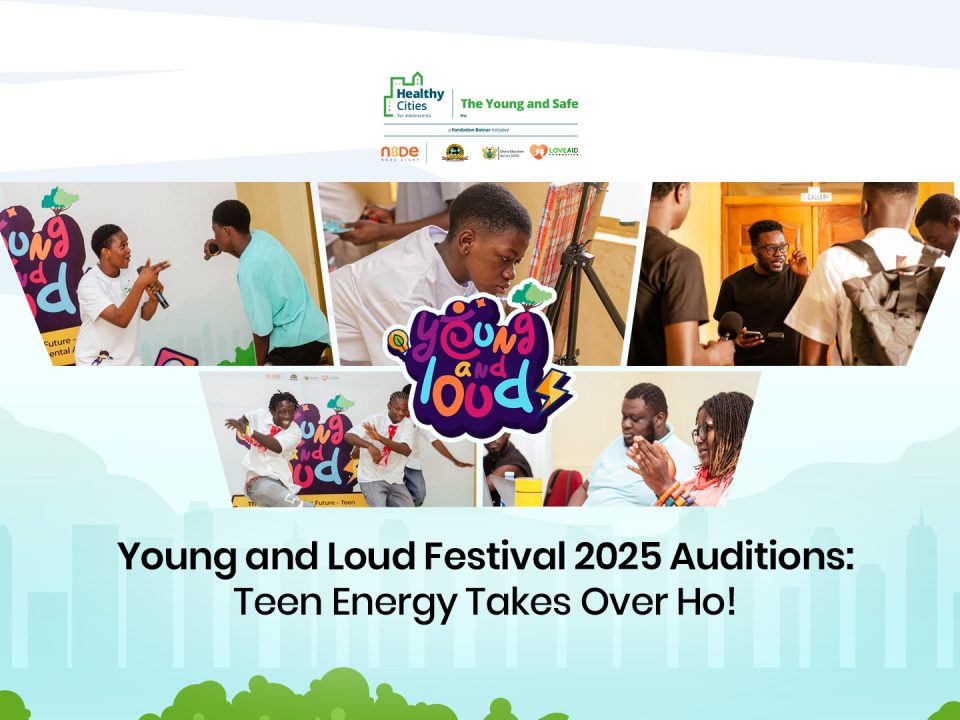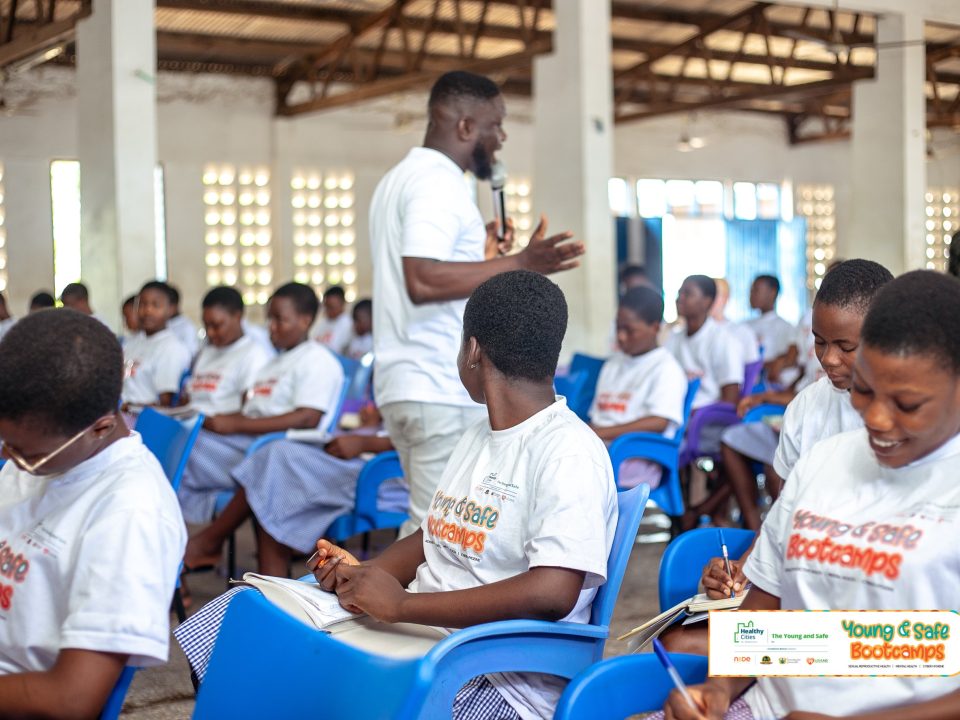
Rethinking Our Cities for Young People: A Blog Series
May 8, 2025
Is Your City Youth-Friendly? Here’s How to Know
May 9, 2025What Makes a City Youth-Friendly City – and Why Every City Needs to Be One
Cities are living systems. They grow, evolve, and when designed with intention can unlock the full potential of their people. But in Ghana, as in many parts of the world, cities are still being built without the input of one of their most important stakeholders: young people. The focus remains on high-rise office buildings, roads, and residential properties, while youth needs are sidelined.
Young people make up the majority of Ghana’s urban population. In cities like Accra, Kumasi, Ho, and Tamale, over 60% of residents are under 35 (GSS, 2021). Yet their voices are missing from city planning.
Their ideas are excluded, and their essential needs—quality education, mental health services, safe spaces, and support for their entrepreneurial endeavours are rarely prioritized by city authorities. Public parks that once served as spaces for connection and play now lie in ruins or have been built over. City budgets are passed without youth input, leaving services for young people as afterthoughts. Health systems in the cities remain unwelcoming or judgmental. And young people with sporting talent or creative business ideas are left without the structures or opportunities to thrive.
Some cities around the world show us what’s possible. Toronto has youth hubs in libraries, funds youth-led projects, and supports vulnerable young people through its Youth Equity Strategy. Amsterdam gives youth a voice in policymaking, supports young entrepreneurs, and integrates mental health and sexuality education into schools. Helsinki follows UNICEF’s model for youth-friendly cities, building youth assemblies and feedback loops into governance. Melbourne co-designs services with young people, offers youth grants, and includes them in climate and transport planning.
These cities are not perfect, but they are thriving and future-ready because they are investing in their young people.
Ghanaian cities must begin to prioritize young people. Creating youth-friendly cities is not optional—it’s essential. The strength and sustainability of our urban future depend on how we engage, support, and empower the generation that will inherit it.
What Makes a City Youth-Friendly?
Imagine a city where every young person feels heard, safe, and proud to belong. A place where they can walk into a community space to pitch an idea, meet a mentor, find a free desk to start their business, or just relax in a clean, open park. That’s what we call a youth-friendly city.
A youth-friendly city is one that puts young people at the centre of its planning, services and culture. It recognizes that young people aged 10 to 35 are not a burden but an asset. And it takes deliberate steps to support them to grow, thrive and shape the city with their energy and ideas.
UNICEF defines a child and adolescent-friendly city as one that is committed to adopting a child rights approach to local governance. A child-adolescent friendly city ensures that the voices, needs and priorities of young people are an integral part of public policies, programs and decisions.
In a youth-friendly city:
- Young people can participate in decisions that affect them
- There are safe and welcoming public spaces for them to meet, play, express and learn
- Services like healthcare, mental support and information are tailored to their age and reality
- There are real opportunities to gain skills, earn income and start businesses
- Creativity is celebrated and supported, not just tolerated
Why It Matters
Building a youth-friendly city is not about handing everything to young people. It’s about removing the obstacles that prevent them from living fully and contributing meaningfully to city life. No city can thrive long-term without investing in its young people. Here’s why making our cities youth-friendly must be a top priority:
- Youth make up the majority of Ghana’s cities
In most towns and cities in Ghana, over half the population is under 35 years old. If we plan our cities without thinking about them, we are planning for the minority. That is bad policy. It leads to frustration, wasted talent and rising unrest. - Unemployment and boredom are a dangerous mix
Many young people in cities have finished school but have no work. Others never got a real chance. When cities don’t create avenues for learning, earning or expressing creativity, many turn to harmful alternatives. This isn’t just a youth issue. It affects public safety, national productivity and social cohesion. - Youth have solutions we ignore
From social enterprises to tech startups to grassroots movements, young people across Ghana are already working to fix what’s broken. In Ho, Wasteman is promoting a culture of waste segregation. Jesi is helping young people transition into tech careers after school. The Wheel Club is using skating as a creative outlet for youth to cope with frustration and mental health struggles A youth-friendly city doesn’t just applaud these efforts—it supports them. It provides funding, includes young people in policy design, and takes their voices seriously. - Cities grow stronger with youth energy
Consider countries like Denmark, South Korea, and Rwanda—nations building fast, inclusive, green, and digital futures. Their biggest secret is that they invest in their young people. Not just in classrooms, but in cities, in systems that work, and in building trust with the next generation.
What Is Blocking the Way?
Although past efforts have aimed to increase youth participation in local governance in Ghana, the outcomes show that the real barriers to making our cities truly youth-friendly go beyond financial limitations—they are structural and cultural.
- Structures: The setup of city governance often excludes young people by design. Most Municipal Assemblies lack dedicated youth desks. Budgets rarely prioritize youth programs or spaces. Where youth initiatives do exist, they are often fragmented, poorly coordinated, and lack accountability.
- Processes: Young people are rarely engaged in meaningful consultations around city planning or budgeting. They are treated as passive beneficiaries rather than active co-creators. Governance systems tend to be slow, bureaucratic, and misaligned with the fast-paced, dynamic realities of youth.
- Mindsets: The biggest block is belief. Many adults still view young people as inexperienced, incapable, or not yet ready for leadership. This outdated thinking sidelines youth from decision-making. At the same time, some young people have internalized these beliefs, feeling too inexperienced or unwelcome to participate in city affairs. Both perspectives must change.
Youth-friendly cities are not a nice-to-have—they are the foundation for long-term peace, progress, and inclusive growth of the country. Any city serious about its future must stop seeing young people as problems to solve and start seeing them as partners to build with.
We can’t keep designing cities around traffic, concrete, and politics while ignoring the generation that will live in them the longest. We must reimagine our urban spaces with young people at the centre. When youth thrive, cities flourish.
___
In the next article in the Rethinking Our Cities for Young People blog series, we’ll discuss in detail the structural and cultural barriers standing in the way of youth-friendly cities. The article will explore practical actions that policymakers, community leaders, and everyday citizens can take to help reimagine and rebuild cities where young people don’t just survive, but shape the future




